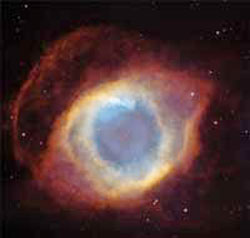Physics and Astronomy
This area deals with the fundamental laws and building blocks of nature and how they interact, the properties and the behavior of matter, and research into space and time and their structures.
innovations-report provides in-depth reports and articles on subjects such as astrophysics, laser technologies, nuclear, quantum, particle and solid-state physics, nanotechnologies, planetary research and findings (Mars, Venus) and developments related to the Hubble Telescope.

World’s Most Powerful Infrared Camera Opens Its Eyes on the Heavens
A new astronomical camera has begun operations on the United Kingdom Infrared Telescope (UKIRT) in Hawaii. The Wide Field Camera (WFCAM), built at the UK Astronomy Technology Centre (UK ATC), Edinburgh, is the world’s most powerful infrared survey camera. It will survey large regions of the sky at infrared wavelengths and is expected to discover both the nearest objects outside our Solar System and the farthest known objects in the Universe.
WFCAM has the largest field of view

Nanotubes form along atmoic steps
The Weizmann Institute of Science today announced that a research group headed by Dr. Ernesto Joselevich has developed a new approach to create patterns of carbon nanotubes by formation along atomic steps on sapphire surfaces. Carbon nanotubes are excellent candidates for the production of nanoelectronic circuits, but their assembly into ordered arrays remains a major obstacle toward this application.
The team was initially researching in a different direction: they were trying

A new twist on an old nebula
One of the nearest and brightest planetary nebulae has a surprisingly complex 3-D structure
In a process comparable to that of an artist who turns a two-dimensional canvas into a three-dimensional work of art, astronomers use the two dimensional images that they capture in their high-powered telescopes to reconstruct the three-dimensional structures of celestial objects.
The latest example of this reconstructive artistry is a new model of the Helix Nebula–one of the nea

Cassini scientist sees evidence that Saturn’s outer rings could be disappearing
A massive eruption of atomic oxygen from Saturn’s outer rings, seen by Cassini’s ultraviolet camera as the spacecraft neared its destination, may be an indication that the planet’s wispy E ring is eroding so fast that it could disappear within 100 million years if not replenished.
Cassini’s Ultraviolet Imaging Spectrograph (UVIS) detected the oxygen atoms spewing into a huge cloud on the dark side of Saturn’s rings as Cassini prepared to enter orbit around

Researchers present Cassini findings at Saturn
As NASA’s Cassini spacecraft approached Saturn last July, it found evidence that lightning on Saturn is roughly one million times stronger than lightning on Earth.
That’s just one of several Cassini findings that University of Iowa Space Physicist Don Gurnett will present in a paper to be published Thursday, Dec. 16 in Science Express, an online version of the journal Science, and in a talk to be delivered Friday, Dec. 17 at a meeting of the American Geophysical Union

Stratospheric balloon launched from Antarctica’s McMurdo base
Aboard Cream, an experiment for the study of cosmic rays
A stratospheric balloon of Nasa was launched yesterday, December 16 at 1.28 a.m. Italian time from the Antarctica’s McMurdo base. The balloon raised Cream (Cosmic Ray Energetics And Mass) experiment up to 40 kilometres of height. In the experiment, coordinated by Eun Suk Seo of Maryland University, participate American universities (Maryland, Chicago, Penn State, Ohio), South Korea universities (Ewa, KyungPook) and an Itali